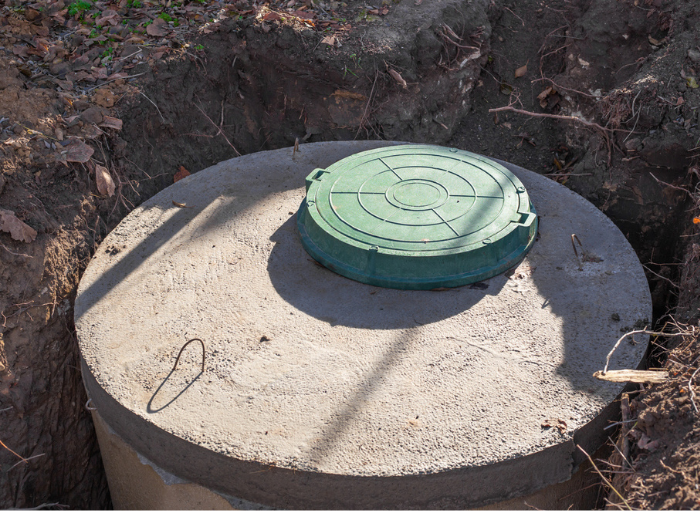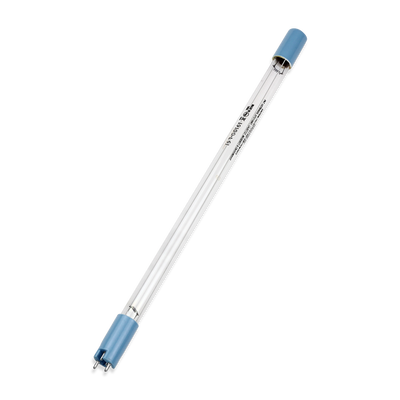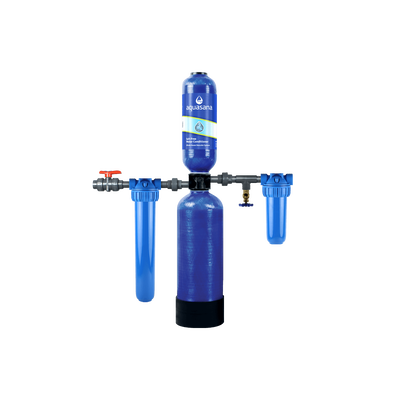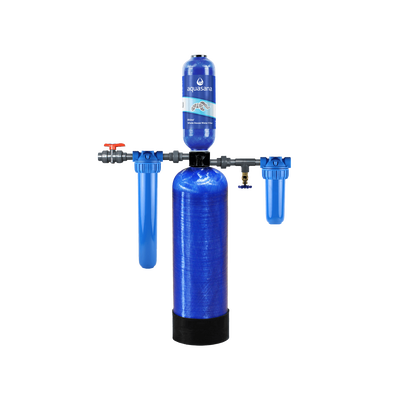1. Murky or cloudy appearance
Your water is supposed to be crystal clear when it comes out of the tap. A murky or cloudy appearance could be a culmination of dirt, clay, silt, or rust present in your water. These particles find their way into your glass because well water passes over these materials on its way to your tap. Unclear water can also be caused by air bubbles or a symptom of plumbing issues beyond well water contamination.
2. Visible sediment in water
Similar to the murky or cloudy appearance, your well water is likely contaminated if you can see particles of dirt, clay, rust, and other sediments. The presence of particles big enough to see confirms that there are likely much smaller particles you can’t see, which could have serious health impacts if ingested. In addition to making you sick, visible sediment in your water can clog well pump tanks and your home plumbing system.
3. Oily film on water
Water with an oily appearance often arises from the convergence of excess minerals and other organic substances, like iron bacteria, within your water supply. This oily sheen occurs when these minerals oxidize in contact with air, affecting the quality of your water. High quantities of iron bacteria in your water can indicate a worn-out well pump or that your well has been installed too close to an untreated water source.
If the oily sheen on your water is more intense, like that of petroleum on water, you’ll definitely need to fix your plumbing, as ingesting petroleum or other man-made pollutants can have a serious negative impact on your health.
4. Scale or scum buildup in pipes, showerheads, and faucets
Scale buildup has a distinctive white look that clogs faucets, shower heads, and pipes. If your water has a scummy feel to it, it could indicate the presence of calcium or magnesium in your well water. The high mineral content of scale and scummy water creates hard water, which can lead to problems like dingy laundry, streaked dishes, and weak shower heads — in addition to the unsightly scale buildup.
5. Brown, red, or green stains on sinks, clothes, and appliances
Contaminated well water can leave behind brown, red, or green stains on your sinks, clothes, and appliances due to the presence of different particles in your water. Brown and red stains can be an indicator of dissolved iron in your water, whereas green stains are due to different acids. Too much iron in your water can cause damage to your heart, liver, and pancreas, as well as affect your home’s well water system and pipes.
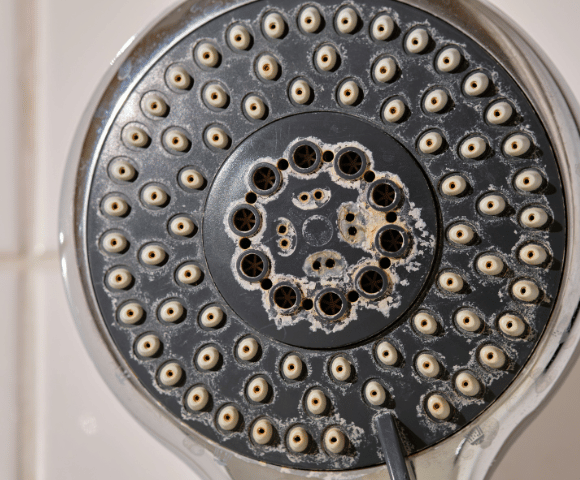
6. Rotten egg, detergent, or chlorine smell
The presence of a rotten egg, detergent, or chlorine smell in well water is a notable indicator of contamination, each scent corresponding to distinct types of pollutants. A rotten egg odor typically arises from the presence of hydrogen sulfide gas, while a detergent-like smell can indicate a septic tank leak into the water. Finally, a chlorine smell can be linked to nearby pesticides or chemicals. Exposure to any of these chemicals at high levels can be bad for your health.
7. Salty, soapy, metallic, or chemical taste
If your water has a salty, soapy, metallic, or chemical taste, that’s a strong indication that your well supply could be contaminated. A salty taste could be due to a high sodium or chloride content in your water. While both of these chemicals are naturally occurring, they sometimes end up in well water supplies due to road salt, sewage, and fertilizers. In high doses, they are both bad for your health and can corrode your plumbing system. Soapy-tasting water indicates high levels of alkaline minerals like calcium, potassium, magnesium, and bicarbonate. While good for you in small doses, too much of these minerals can irritate your skin and your gastrointestinal tract.
Water that tastes heavily of chemicals could be due to nearby pesticides or other chemicals that have entered into your private well. Heart disease and cancer can result from ingesting high levels of pesticides in your drinking water, but usually, the levels found in drinking water shouldn’t be high enough to cause those health effects. Lastly, a metallic taste indicates a high level of acids in your water that can cause stomach problems and irritated skin if not treated properly.
What to do if your well water is contaminated
If you think your well water is contaminated, here is a list of steps you can take to address your problem:
1. Stop using water sourced from the well
If you suspect that your well water might be contaminated due to the presence of unusual odors, strange flavors, or stains, the initial and most crucial step is to immediately cease consuming or using the water for drinking, cooking, and other household purposes. Your health and well-being are paramount, and continuing to use potentially contaminated water could expose you and your family to various health risks.
2. Have the well water tested to identify contaminants
After discontinuing the use of potentially contaminated well water, the next step is to arrange for a test to identify the contaminants. Seeking the expertise of certified water testing professionals is paramount in this phase. The testing process encompasses a wide range of potential pollutants, including bacteria, chemicals, heavy metals, and more.

3. Install a well water filter to make it safe
After identifying the contaminants affecting your well water through professional testing, the third step is to proactively safeguard your water quality by installing a reliable well water filtration system. A high-quality filtration system can effectively remove a wide spectrum of impurities, including bacteria, chemicals, sediments, and odorous compounds, ensuring that the water you and your loved ones consume is safe and pure. The best way to treat well water specifically is with UV (ultraviolet) disinfection, so we strongly recommend a system that includes that filtration step.
Among the notable options available, Aquasana's Rhino® Well Water with UV technology stands out as an exceptional choice. This advanced, whole house filtration system was designed specifically for homes that rely on well water and sterilizes 99.99% of viruses and bacteria and 99% of cysts – contaminants commonly found in well water. With multiple filtration stages and ultraviolet disinfection, the Rhino® Well Water with UV can help make your well water cleaner and healthier.
WHOLE HOUSE WATER FILTER
Rhino® Well Water with UV
Whole house filtration system protects from bacteria, viruses, cysts and other contaminants commonly found in well water. Lasts for 5 years or 500,000 gallons.
.png)
